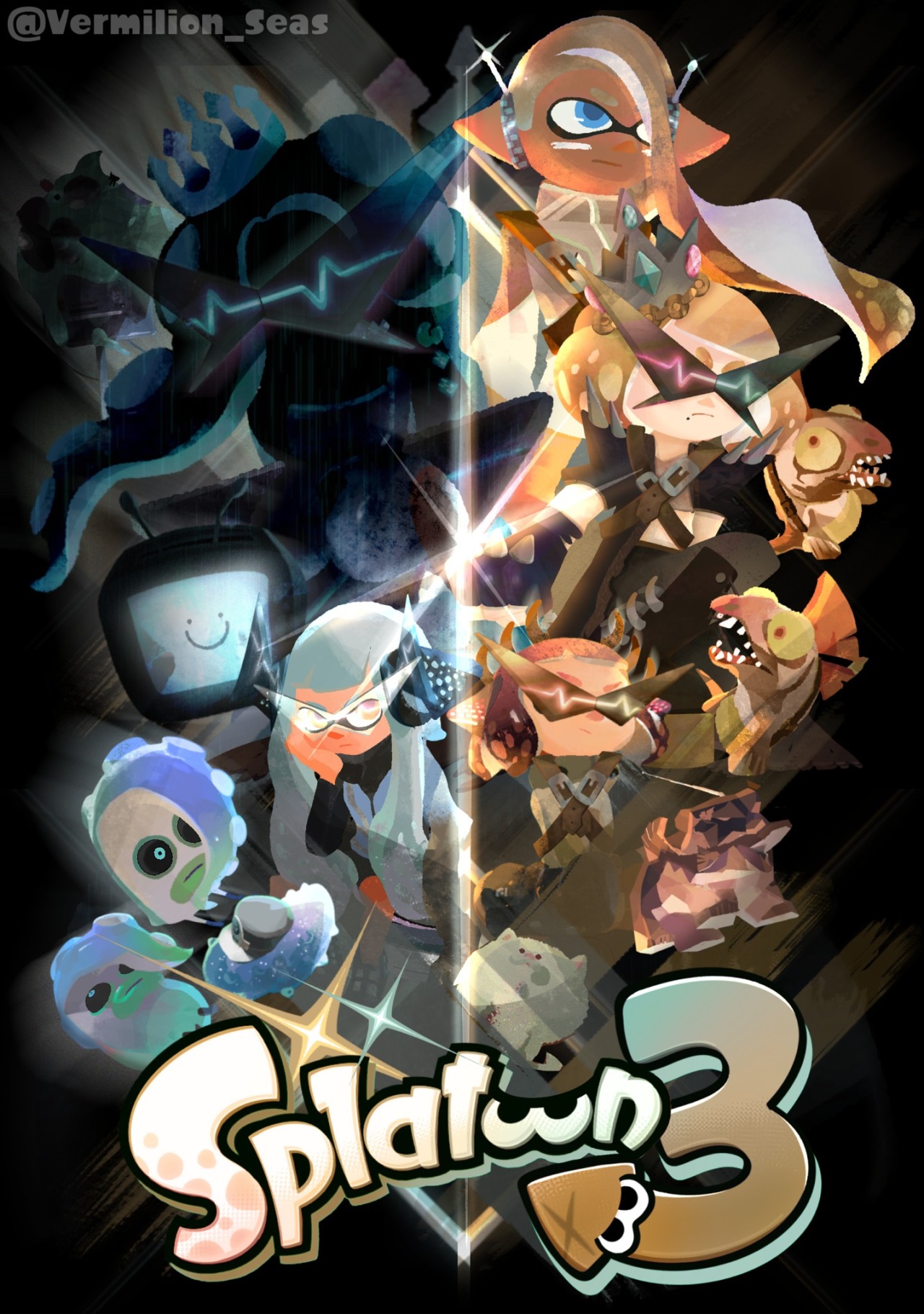

Want to go hard with the Z-Zap ‘85 or keep it simple with the Splattershot? Maybe something a bit more hectic like the Sloshing Machine? Splatoon has something for everyone, regardless of playstyle or ability. “There are so many different weapon types that there’s a perfect choice for everyone,” she says. “It’s easier to play because players improve quickly with uncomplicated controls and rules.” “There’s many reasons why I think Splatoon is more interesting than other shooters,” Ishikawa continues. In a world of competitive shooters with steeper learning curves such as Fortnite (in build mode, at least) and Apex Legends, Splatoon exists almost as an antithesis. He’s currently a first-year university student and primarily plays Turf War with friends.

PROJECT SPLATOON 3 SERIES
“The easy-to-understand rules are the secret to Splatoon’s appeal,” says Sota Ishikawa, a series veteran that has played regularly since the original. So, again, how has Splatoon risen to become one of Nintendo's most important series in Japan? To get to the bottom of this anomaly, we spoke to three Japanese Splatoon players (and former/current students of this article’s author) to try and learn why squid-on-octopus ink-based action appeals to them so much. Take Pikmin and ARMS, for example, which we adore but struggle to compete with the tentpole franchises when it comes to sales numbers or mainstream mindshare. How, exactly, did Splatoon reach heights rivalled only by Pokémon in Japan? New IPs from the House of Mario appear as often as shiny Pocket Monsters, yet typically move comparatively mediocre numbers or fall into relative obscurity behind the premium marques of Mario, Animal Crossing, Zelda, and Pokémon.
PROJECT SPLATOON 3 FULL
And now with Splatoon 3 becoming not only the fastest-selling Switch game in Japan, but the country's fastest-selling video game, full stop (beating the previous record-holder, Pokémon Black & White), the series has cemented itself as a cultural touchstone for a generation of Japanese gamers. The release of the far more successful Nintendo Switch and the debut of Splatoon 2 saw the series transmute into a household name. Lifetime worldwide sales of Nintendo EAD's first ink-based team shooter would come to rest at 4.95 million units, a very respectable figure - especially for brand-new IP - but hardly an indicator of the utter phenomenon the franchise would become in Nintendo's homeland. This explosion of Splat-swag was perhaps more of a surprise given that the Wii U sold only 3.3 million units in Japan. Convenience stores advertised raffles for figurines, coffee cups, and Splatoon-branded bags.

Squid-girl stickers adorned pencil cases. One day in May 2015, Splatoon merch appeared everywhere in Japan.īaby inklings dangled from kids’ backpacks.

The Legend of Zelda: Skyward Sword HD, and the themed Joy-Con, launch separately for Nintendo Switch on July 16.It happened almost overnight. A set of themed Joy-Con controllers will also be released alongside the game: the right Joy-Con controller is themed after the Master Sword, while the left features the Hylian Shield motif.
PROJECT SPLATOON 3 PRO
In this enhanced version of the game, running at a smooth 60 frames per second, you can choose to play using motion control with the two Joy-Con controllers in a similar way to the original, or use newly added button-only controls to play the game with the Nintendo Switch Pro Controller, in handheld mode or using a Nintendo Switch Lite system. The Legend of Zelda: Skyward Sword HD: Originally released in 2011 for the Wii system, and depicting the earliest story in the series’ timeline – as well as the creation of the Master Sword itself – The Legend of Zelda: Skyward Sword game now arrives on Nintendo Switch with smoother and more intuitive controls, in addition to improved framerate and graphics.


 0 kommentar(er)
0 kommentar(er)
